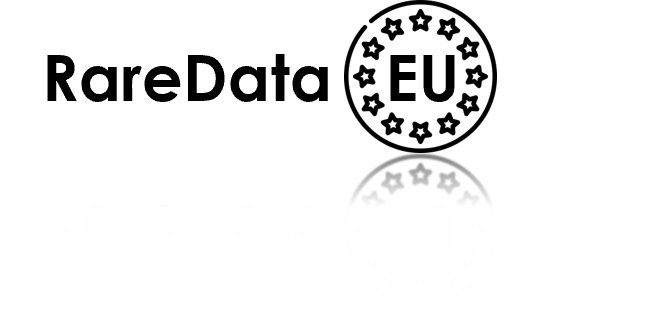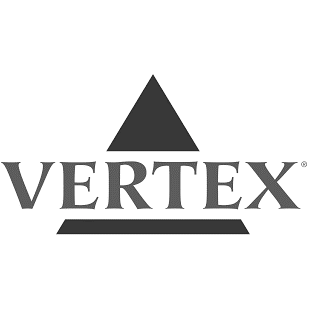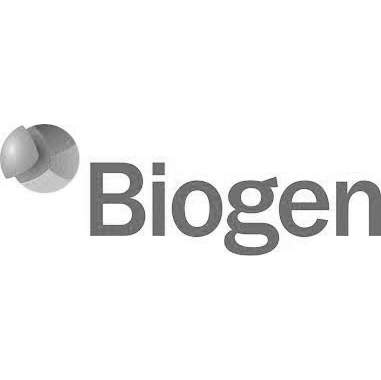Common Rare Disease data collection challenges
-
We are a small patient organization. How do we get pharma to fund the development of a registry and annual operation costs to sustain the registry.
Partnering with RareDataEU could be a potential solution for small patient organizations looking to fund the development and maintenance of a rare disease registry. RareDataEU has expertise in data collection, project management, and industry cooperation, and can provide direction throughout the entire process.
One approach could be to submit a short-term sponsorship funding agreement to the pharma company, outlining the benefits of developing a basic population registry for the rare disease in question. Initial deliverables will include insights into the patient population, disease progression, treatment outcomes, and more.
By partnering with RareDataEU, the patient organization can leverage our expertise in multi-phase registry development and management. Each phase has standalone deliverables yet embedded links to upgrade the registry to the next phase. This can help to increase the likelihood of funding from pharma companies. Together we can provide a strategic long-term vision through the data collection roadmap. This is a critical component in securing funding.
RareDataEU can help to develop a comprehensive roadmap that outlines the goals and objectives of the registry, as well as the strategies for data collection, analysis, and dissemination in each stage of drug development. This roadmap can demonstrate the potential impact of the registry, not just on the rare disease community but also on the broader healthcare ecosystem. Future registry upgrades can locate suitable patients for their drug and providing safety and efficacy data to regulators and reimbursement agencies. With a well-defined roadmap, pharma companies will view the registry's development and maintenance costs as a core part of their business leading to a sustainable solution for patient organizations.
-
How can we improve the quality of data when we only have access to a small patient cohort with our rare disease?
Patient data on rare diseases is indeed rare, which can pose challenges when it comes to data quality. For more common diseases, the well-known statistics Law of Large Numbers can identify outliers and generate statistically reliable data even if it is collected by paper forms. However, with rare diseases, it's crucial to carefully check the data during the patient encounter to validate it against normal ranges and compare it with prior entries. For instance, if the patient's BMI has declined by 10% since their last encounter three months ago, it's important to check during the encounter that this is correct and not due to a data collection error.
RareDataEU can help by providing real time data validation checks and processes to ensure that the data collected from the small patient cohort is of the highest quality possible. For example a PRO form can be prepopulated with prior entries. By doing so, researchers can be confident in the accuracy and reliability of the data they collect, even in the context of small patient cohorts. The net effect is to better understand rare diseases, identify potential treatments, and improve patient outcomes.
-
Data collection software cannot be upgraded fast enough to accommodate rapid changes in required clinical data
It is understandable that the rapid changes in required clinical data can pose a challenge for data collection software. However, RareDataEU understands the importance of flexibility and adaptability in rare disease registries.
The problem described is not uncommon, as many registries are designed by academic researchers with advanced IT knowledge but no real world experience. RareDataEU, on the other hand, has extensive experience in designing and implementing registries specifically for rare diseases. We refer to this as "Registryware" rather than "Professorware".
At RareDataEU, we recognize that registries must always evolve to meet the expanding requirements of stakeholders. Therefore, we have designed our registries with flexibility in mind. Our platform allows for easy customization of registries, enabling stakeholders to add or modify registry fields as easily as adding a row to a spreadsheet. This feature is particularly important for international registries where local national requirements necessitate customization.
-
Importing historical and current hospital records. Access to patient data in primary care and hospitals
There are three sources of data for registries:
1) Patient entered such as patient recorded outcomes (PRO)
2) Standard hospital (EHR) data including encounter, treatments, medication and lab results
3) Clinical entered health factors unique to the rare disease and not supported within standard hospital EHR
Efficiently importing encounter, treatment, medication, and lab result data from historical and current hospital Electronic Health Records (EHR) into rare disease registries can be a challenging process. Manual data entry is slow and error-prone, making it necessary to find more streamlined methods.
RareDataEU has the capability to import hospital data to REDCap using FHIR, provided the hospital IT system is also FHIR-enabled. FHIR stands for Fast Healthcare Interoperability Resources. It is a standard for electronic healthcare data exchange, developed by HL7 International. FHIR uses a modern web-based approach for exchanging healthcare information, making it easier to implement and more flexible than older standards. This makes it possible to input large quantities of accurate and detailed clinical data. We will ensure that the patients have specifically consented to allow their personal data to be exported from the hospital and imported into the registry.
-
GDPR compliance and recording personal identifiable data
The General Data Protection Regulation (GDPR) is a regulation that was implemented in the European Union in 2018, and its purpose is to protect the privacy of individuals and their personal data. However, when it comes to rare diseases, sharing clinical data is essential to the development of cures, and this creates challenges for GDPR compliance.
"97% of people living with a rare disease agree to share their health data in order to foster research." Source: Rare2030 findings
Rare diseases affect a small number of people, and sharing data is key to finding cures. However, GDPR regulations require explicit consent, so patients cannot consent for future unspecified events. In traditional rare disease registries, this can be particularly challenging, as patients may not know what studies they will be interested in participating in. Paper-based consent is too cumbersome, particularly if the patient's email is not known and if the consent forms are held in different hospitals. RareDataEU registries support online "dynamic consent" to be used to communicate and track patient enrollment in specific studies.
Anonymization of Data: GDPR regulations do not apply to fully anonymized data, but there is no clear definition of anonymization within the legislation. This creates challenges for rare disease registries, where it can be difficult to isolate a patient's data from the patient themselves. In rare diseases, the risk of re-identification is higher due to the small number of patients. However this should be balanced with the need and desire of patients to share their data.
Role of the Data Controller: A not-for-profit umbrella patient organization that is legally incorporated in Europe can serve as the GDPR Data Controller and provide central custodial services for patient consent. This Single Point of Contact (SPOC) for enrolling and consenting can make larger international RWD Studies much more feasible.
REDCap is a widely used clinical data collection system that is compliant with both HIPAA and GDPR. REDCap meets the GDPR requirement of Data Protection By Design. This includes the ability to classify patient identifiable fields and restrict access only to those who require it. Reports are anonymized by default, and a full audit trail is available to track user interactions. In contrast password-protected spreadsheets are less secure and may not meet GDPR requirements in the event of a data breach.
In conclusion, GDPR compliance is actually helpful in rare diseases because it provides a common international legal process for sharing patient data, however it can be challenging. Balancing privacy and research, anonymizing data, and obtaining explicit consent for each specific study are some of the challenges that need to be addressed. Patient organizations need to assume the crucial role in ensuring that patient data is protected and that consent is obtained for each study.
-
Process for setting up long term data sharing and cooperation agreements in rare disease research to increase trust between industry and pharma
Rare disease clinical data is by definition rare and therefore requires collaboration between industry and academia to advance scientific knowledge and develop treatments. However, there is frequently a lack of trust between these two sectors due to concerns around data ownership and commercial interests. To address this, long-term data sharing and cooperation agreements can be established to increase trust and facilitate collaboration. Each orphan drug patient can be worth millions to pharma, yet patient organizations struggle to fund the most basic registry to identify these patients.
RareDataEU approach is to set up long-term data sharing agreements to establish a shared platform where data can be stored and accessed by both industry and academia. This platform can be governed by mutually beneficial agreements that outline the terms of data sharing, including the scope of research, data ownership, intellectual property, and confidentiality. By establishing clear guidelines, all parties can understand their rights and responsibilities and work collaboratively towards common goals.
Another important aspect of long-term data sharing agreements is transparency. Both industry and academia must be transparent about their intentions, methods, and results to build trust and foster collaboration. This can be achieved through open access publications, data sharing policies, and public engagement activities.
We will involve all stakeholders in the process, including patient advocacy groups and regulatory bodies. Patient advocacy groups can provide valuable insights into the patient perspective and will ultimately control consented access to the data on behalf of the patient. Finally regulatory bodies must be engaged to ensure compliance with ethical and legal requirements.
In conclusion, setting up long-term data sharing and cooperation agreements is essential for advancing rare disease research and increasing trust between industry and academia. A shared platform governed by mutually beneficial agreements, involving all stakeholders, and promoting transparency can facilitate collaboration and drive progress towards better patient outcomes. It is time to replace the current "Chinese Wall" with a cooperative data platform that benefits everyone involved in rare disease research.
-
How do we implement FAIR principals. Consolidating data from different registries
FAIR stands for "Findable, Accessible, Interoperable, and Reusable" and is a set of principles developed to make research data more usable and accessible. The FAIR concept was originally proposed in a 2016 Scientific Data article. In the context of registries, FAIR principles can help ensure that collected data is valuable and can be effectively used to improve patient outcomes.
Making data "FAIRified" involves ensuring that data is structured in a way that is easy to find, access, and use. This requires standardized data collection methods and the use of common data elements. Controlled vocabularies and ontologies can also help ensure that data is standardized and easily discoverable. RareDataEU has adapted these policies in defining a data structure for their unique Federated Registry platform.
The technology needed to establish a FAIR registry is advanced and is unlikely to be readily comprehensible to many clinicians. This can result in a "black box" solution, making clinical upgrades and customization challenging.
Ultimately, the central goal of FAIR is data interoperability, This is really a clinical challenge that cannot be resolved by IT experts. An example of such a clinical decision is determining the equivalency of medications in treating symptoms specific to a rare disease. This requires clinicians to define the interoperability of data for this specific data element.
It is our view that sharing population data across diseases may be useful for public health studies but is of limited use for researchers and in most cases is not supported by the original patient consent. Sharing population data across diseases may pose ethical and legal challenges regarding data privacy and confidentiality. Therefore this data should not be automatically “Findable” through IT searches.
However sharing detailed outcome data on a specific disease across countries can enable researchers to conduct comparative analyses and identify best practices and gaps in care delivery.
RareDataEU’s unique federated registry approach provides an ideal platform for sharing data within a disease. For instance, a Cystic Fibrosis researcher in Italy would not benefit from accessing outcome data on an Italian Epidermolysis Bullosa patient. However, access to Cystic Fibrosis patient data in Germany would allow her to compare survival rates, quality of life indicators, and adherence to treatment protocols This could help the Italian researcher improve her national practice and contribute to the advancement of knowledge on Cystic Fibrosis.
In conclusion, FAIR principles provide a solid framework for supporting international data sharing. However, by limiting this to a single target disease (e.g., Cystic Fibrosis), RareDataEU enables easier control of consent and FAIR access through their federated registry. This provides a Single Point of Contact (SPOC) where the rare disease umbrella patient organization controls the scientific direction of the registry. The IT overhead is limited to easy-to-understand metadata tags. This allows local clinical researchers to configure and customize the registry to meet their national needs while still supporting a core minimum dataset for international outcome benchmarking.





